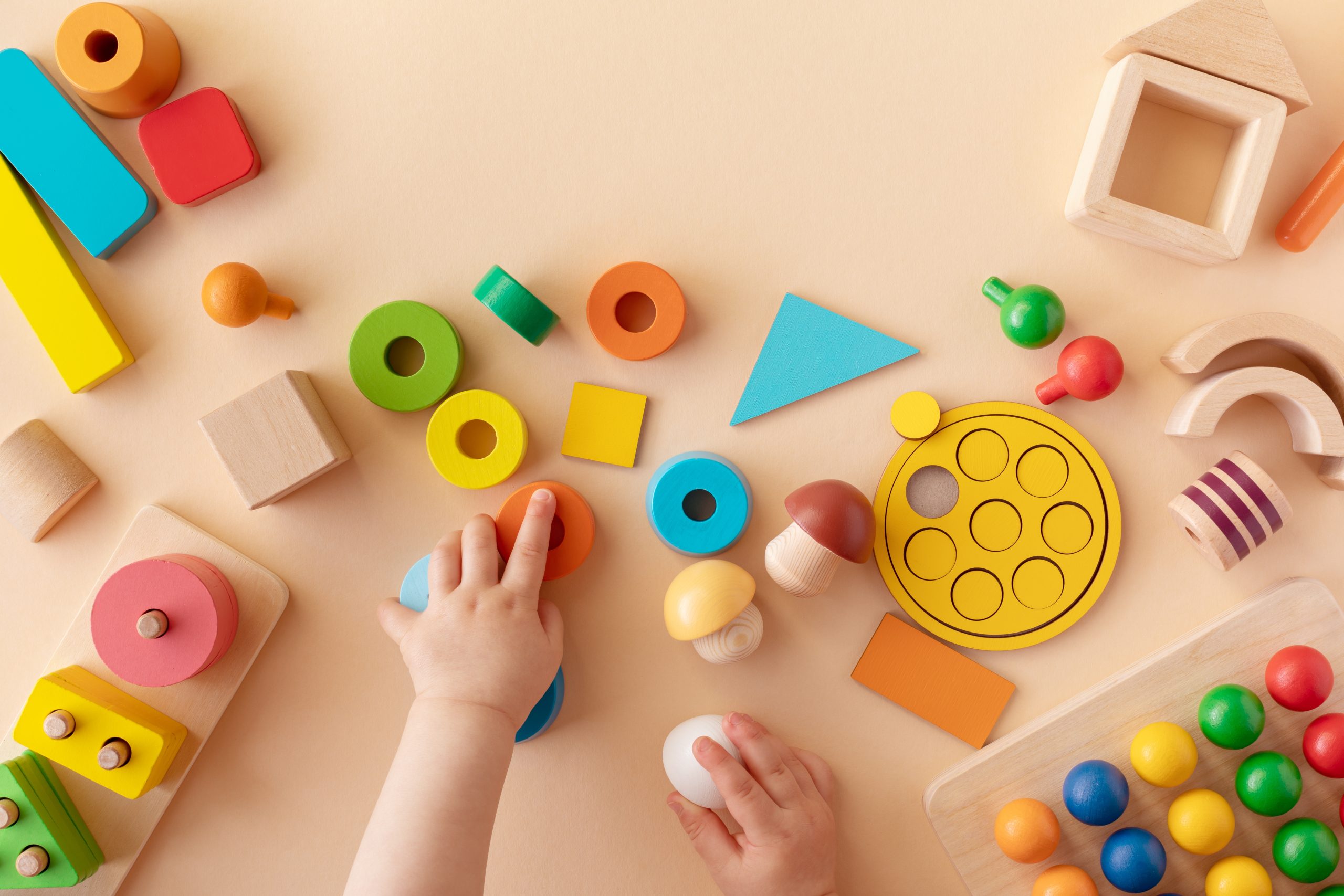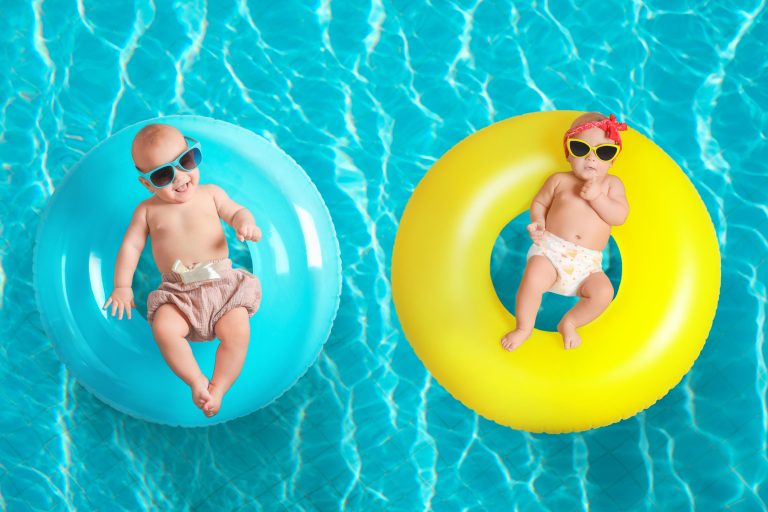Sensory Development & Toys
Embarking on the journey of sensory development with toys is a thrilling exploration that mixes fun with essential learning experiences for your children. By utilising the power of play, you as a parent can provide rich environments that stimulate the senses and develop paramount developmental milestones for your child. What should we do to provide the best environment for our babies’ sensory development? Let’s find out step by step.
What is Sensory Development?
Sensory development in summary is the process by which your child’s five primary senses of hearing, smell, taste, touch, and vision improve. This complex development involves the nervous system’s ability to receive input from these senses and then form appropriate behavioural responses. As babies grow, their sensory experiences play an essential role in how they figure out the world around them. Effective sensory development is crucial for your baby’s growth, emotional regulation, and the development of motor skills. By making your child engage in activities that stimulate these senses, they can improve their ability to process sensory information, which is foundational for learning and social interaction. Understanding its significance and supporting your baby’s sensory development can help ensure that your children reach their full potential on their long journey of growth.
Sensory Development with Toys
With a selection of toys filled with various textures, colours, sounds, and shapes, children can engage in immersive sensory experiences that promote their sensory growth. These toys act as tools for discovery, igniting curiosity and encouraging experimentation as your little ones grow and interact with their surroundings. Furthermore, the interaction with sensory toys not only enhances perceptual abilities but also lays the groundwork for refining motor skills and promoting social interaction through shared play experiences. As we step foot into the world of sensory development with toys, it becomes a journey that celebrates the joy of learning and the boundless potential of being a child.
Touch (Tactile) Sensory Development:
The sense of touch is one of the earliest and most developed senses in children, playing a crucial role in how they understand their world and forming the base of communication and emotional intelligence. To explore and improve your baby’s tactile sensory development, toys with various textures, shapes, and materials are of significant help. Toys with diverse textures, such as soft, plush, squishy, bumpy, or rough surfaces, are ideal mediums for stimulating the sense of touch. Incorporating toys made from different materials, such as cloth, rubber, or wood, offers a broad range of textural experiences. This variety helps your children refine their sensory processing skills, supporting their overall development and interaction with their environment.
Hearing (Auditory) Sensory Development:
Auditory stimulation is a crucial part of sensory development as it forms the base of language development and auditory processing in our children. Toys that produce sounds or music can significantly contribute to auditory sensory development by providing varied auditory stimuli. Gentle sounds and melodies from toys such as rattles, musical instruments or toys with different sound textures are perfect for engaging a child’s hearing senses. These auditory experiences can help your children recognise different sounds and differentiate between them, enhancing their ability to process auditory information effectively. Exposing your child to diverse auditory stimuli through such toys can positively impact their language acquisition, cognitive development, and overall sensory processing skills.
Sight (Visual) Sensory Development:
Bright colours, bold patterns, and contrasting shades captivate children’s visual senses, playing a crucial role in promoting visual sensory development. Toys that feature vibrant colourings and varying textures can significantly improve visual perceptiveness and depth perception. High-contrast patterns, such as those found in certain picture books, are particularly effective in stimulating a child’s vision. These visual stimuli help children differentiate between shapes and colours, enhancing their ability to process visual information. By engaging with toys that offer diverse visual experiences, children can develop stronger visual recognition skills, supporting their overall cognitive and sensory development.
Scent (Olfactory) and Taste (Gustatory) Sensory Development:
Taste and smell are essential senses for understanding and experiencing the world, and toys that incorporate scents or taste can significantly contribute to olfactory and gustatory sensory development. Although less common, toys like edible dough or scented markers can provide valuable sensory experiences. It is important to be cautious with these toys, avoiding sensory toys with small parts that can be swallowed and ensuring that any scents are safe and non-toxic. Your supervision when letting your kids play with such toys is crucial, as these toys usually urge children to taste them. Natural toys, such as wooden teethers or items made from food-grade materials, are particularly beneficial for developing your child’s olfactory and gustatory senses. By providing safe and engaging olfactory and gustatory experiences, these toys help your little ones explore and refine their sense of taste and smell, supporting their overall sensory development.
Multisensory Toys:
Multisensory toys, which are designed to engage multiple senses at the same time, offer a thorough and enriching playtime that promotes holistic development. For example, a textured ball that makes gentle sounds as it rolls enhances both your baby’s tactile and auditory senses, captivating their attention and stimulating sensory processing. Musical instruments that involve touch and sound, or toys with vibrant lights and diverse textures, are excellent for engaging multiple senses. These toys not only entertain them endlessly but also support the development of various sensory and motor skills in an integrated manner. By providing various sensory stimuli, multisensory toys help children build connections between different types of sensory information, enhancing their overall cognitive and perceptual abilities.
In conclusion, we can agree that sensory development is crucial for your little one, and it is possible to make learning fun and urge them to explore the endless possibilities that are offered in the boundless world of being a child. Lastly, Let’s explore some of the examples of toys that are best for your child’s overall sensory growth:
- Soft and Plush Toys: Soft and plush toys offer comfort and sensory stimulation, both educating and soothing your child. If possible, choose ones with varying textures, such as faux fur, satin, and ribbons, to provide a diverse tactile experience for your child.
- Activity Gyms and Playmats: Activity gyms and playmats feature hanging toys, mirrors, and textures to captivate your baby’s visual and tactile senses while encouraging physical movement and exploration. As they explore the world of senses, they are urged to move and the benefit of physical movement is added to the list.
- Sensory Balls: Sensory balls come in different shapes, sizes, and textures, making them perfect for tactile stimulation and gross motor skills development. As balls are also easy for them to recognise and differentiate, having different textures on a known object helps them carry themselves to the next level of development.
- Musical Instruments: Musical instruments like shakers, drums, and xylophones engage the auditory senses while encouraging rhythm and creativity. As they both have to touch and hear to completely interact with musical instruments, more than one sense is urged to grow, thus making your child climb the steps of growth with ease. At the end, you also find out that your child is a musical genius.
- Building Blocks and Stacking Toys: These sorting and stacking toys not only improve their fine motor skills but also allow children to explore shapes, colours, and textures as they build and stack. Working on multiple areas of growth at the same time both widens your child’s perspective and gives them the confidence to explore more challenging tasks.
- Water and Sand Play: Water tables, sandboxes, and water toys provide a sensory-rich experience, allowing kids to explore different textures and temperatures. The freedom that comes with liquidity also helps your children explore their creativity and opens new windows of potential in their minds. Please make sure that while busy with activities such as these, your child is supervised by an adult for a safer experience.
- Sensory Books: Interactive books with different textures and pop-ups engage multiple senses and promote early literacy skills. As the task of having to turn the pages improves their motor skills, the unique sensory experience that they are welcomed within each page promotes their sensory growth and perspective.




